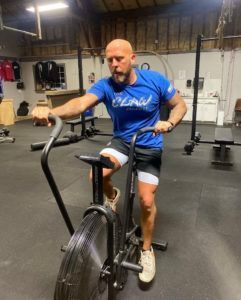The Importance of Active Recovery During Sets of Compound Lifts

When you’re at the gym pushing your limits with compound lifts like squats, deadlifts, and bench presses, you’re undoubtedly focused on getting stronger. However, the time you spend between sets—known as “recovery”—can be just as crucial for optimizing your performance and gains. In this blog post, we’ll delve into the concept of active recovery during sets of compound lifts and why it might be a game-changer for your fitness journey.
What is Active Recovery?
Traditionally, rest periods between sets have been passive, meaning you simply sit or stand while catching your breath. Active recovery is a more dynamic approach where you engage in low-intensity exercises to maintain your heart rate and facilitate blood flow.
Types of Active Recovery Exercises
• Light jogging or walking
• Stretching
• Low-intensity bodyweight exercises like push-ups or air squats
Benefits of Active Recovery
Improved Blood Circulation
Active recovery helps circulate oxygen-rich blood to your muscles, which can aid in quicker recovery and reduce muscle fatigue.
Better Lactic Acid Removal
Exercising at a lower intensity between sets can help remove lactic acid buildup, allowing you to perform better in subsequent sets.
Enhanced Mental Focus
The act of doing something constructive during your rest periods can keep you engaged and focused on your workout.
More Efficient Workouts
By incorporating active recovery, you’re essentially getting a mini cardio workout in between your lifting sets, making your gym time more efficient.
How to Incorporate Active Recovery into Your Compound Lifts Routine
1. Identify Suitable Exercises
: Choose low-intensity activities that won’t exhaust the same muscles you’re targeting in your main lifts.
2. Timing
: Limit active recovery to about 50-60% of your total rest time to ensure you are well-rested for your next set.
3. Intensity
: Keep the intensity low. The goal is to recover, not add another layer of fatigue.
4. Listen to Your Body
: If you find that active recovery is affecting your performance in your main lifts, consider scaling back.
While the traditional passive recovery has its merits, implementing active recovery during sets of compound lifts can offer unique benefits like improved blood flow, better lactic acid removal, and heightened mental focus. The key is to strike the right balance so that your performance in your main lifts does not suffer.
Ready to take your lifting and recovery to the next level? Contact us today to explore the options we offer at Sentry Athletics.
With active recovery as a part of your strategy, you’re not just lifting weights; you’re lifting your entire workout experience.
| Reply
Forward
|
The post The Importance of Active Recovery During Sets of Compound Lifts appeared first on CrossFit Sentry.





